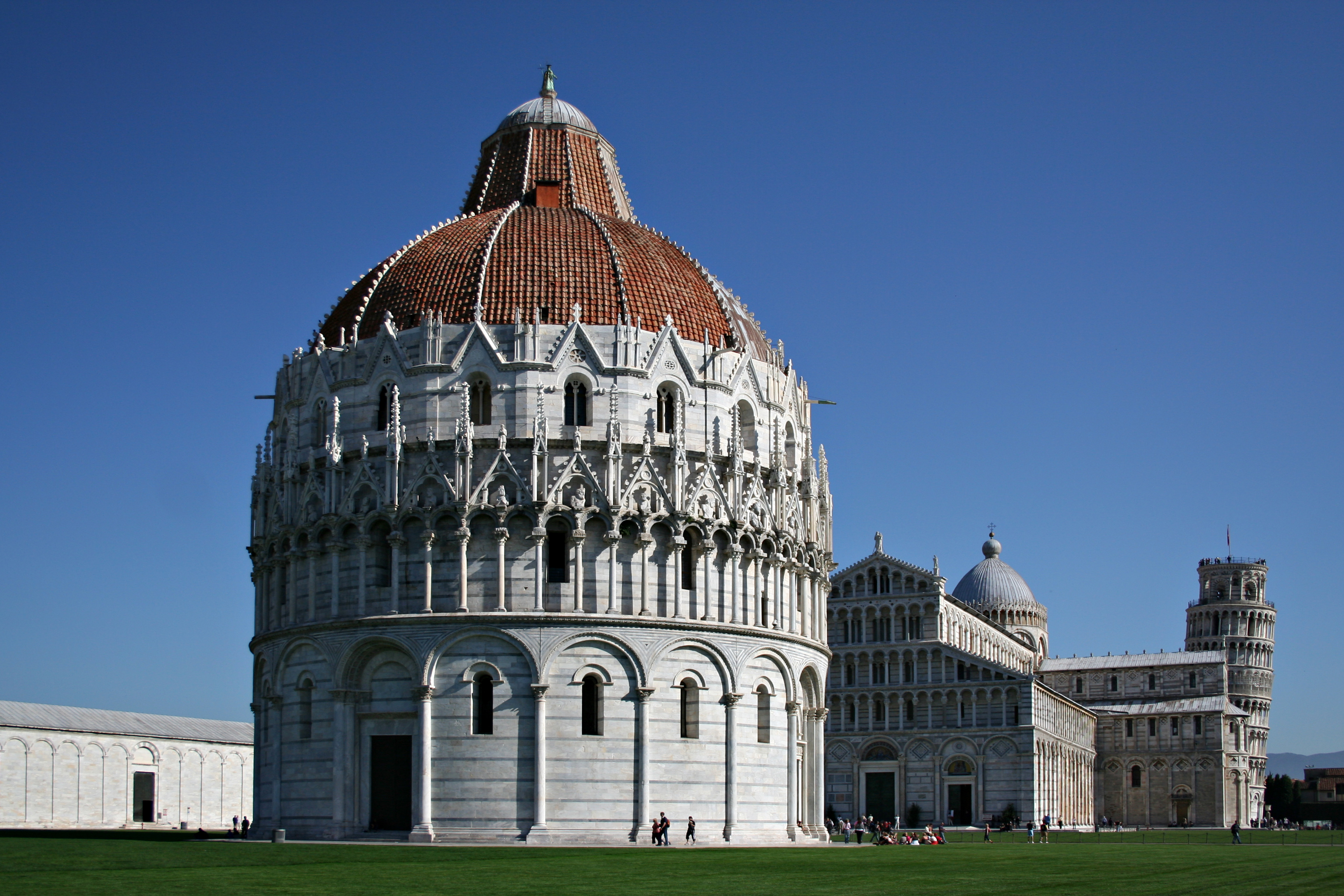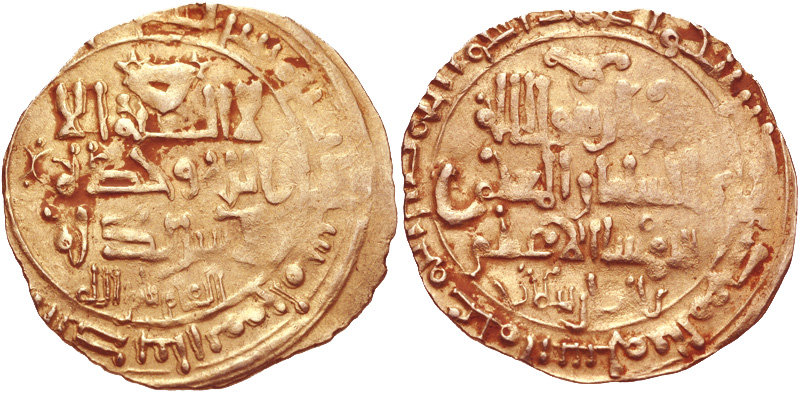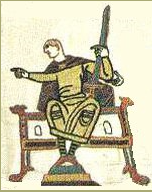|
1064
Year 1064 ( MLXIV) was a leap year starting on Thursday (link will display the full calendar) of the Julian calendar. Events By place Europe * Summer – King Ferdinand I (the Great) conquers more territory in modern-day Portugal and captures Coimbra. He appoints Sisnando Davides to reorganise the economy and administer the lands encircling the city. * European warriors go to Spain, to participate in the siege of Barbastro. This expedition is sanctioned by Pope Alexander II – and is now regarded as an early form of Crusade. * Harold Godwinson, Earl of Wessex, is shipwrecked on the shores of Ponthieu (Normandy). He is captured by Count Guy I who takes him as hostage to his castle of Beaurian. * Duke William I (the Bastard) demands the release of Harold Godwinson from Guy I (after paid a ransom). Harold must swear an oath to aid William to the throne of England. * Kings Harald Hardrada of Norway and Sweyn II of Denmark agree to a peace agreement. Harald tur ... [...More Info...] [...Related Items...] OR: [Wikipedia] [Google] [Baidu] |
Crusade Of Barbastro
The crusade of Barbastro (also known as the siege of Barbastro or battle of Barbastro) was an international expedition, sanctioned by Pope Alexander II, to take the Spanish city of Barbastro, then part of the Hudid Emirate of Lārida. A large army composed of elements from all over Western Europe took part in the siege and conquest of the city (1064). The nature of the expedition, famously described by Ramón Menéndez Pidal as "a crusade before the crusades", is discussed in historiography, and the crusading element of the campaign is still a moot point. Expedition Pope Alexander II first preached the Reconquista in 1063 as a "Christian emergency." It was also preached in Burgundy, probably with the permission or participation of Hugh of Cluny, where the abbot's brother, Thomas de Chalon, led the army. Certainly zeal for the crusade spread elsewhere in France, for Amatus of Montecassino notes that the "grand chivalry of the French and Burgundians and other peoples" (''grant che ... [...More Info...] [...Related Items...] OR: [Wikipedia] [Google] [Baidu] |
Harald Hardrada
Harald Sigurdsson (; – 25 September 1066), also known as Harald III of Norway and given the epithet ''Hardrada'' (; modern no, Hardråde, roughly translated as "stern counsel" or "hard ruler") in the sagas, was King of Norway from 1046 to 1066. Additionally, he unsuccessfully claimed both the Danish throne until 1064 and the English throne in 1066. Before becoming king, Harald had spent around fifteen years in exile as a mercenary and military commander in Kievan Rus' and as a chief of the Varangian Guard in the Byzantine Empire. When he was fifteen years old, in 1030, Harald fought in the Battle of Stiklestad together with his half-brother Olaf Haraldsson (later Saint Olaf). Olaf sought to reclaim the Norwegian throne, which he had lost to the Danish king Cnut the Great two years prior. In the battle, Olaf and Harald were defeated by forces loyal to Cnut, and Harald was forced into exile to Kievan Rus' (the sagas' ). He thereafter spent some time in the army of Grand Pr ... [...More Info...] [...Related Items...] OR: [Wikipedia] [Google] [Baidu] |
Alp Arslan
Alp Arslan was the second Sultan of the Seljuk Empire and great-grandson of Seljuk, the eponymous founder of the dynasty. He greatly expanded the Seljuk territory and consolidated his power, defeating rivals to the south and northwest, and his victory over the Byzantines at the Battle of Manzikert, in 1071, ushered in the Turkoman settlement of Anatolia. "But the Battle of Manzikert opened Asia Minor to Turkmen conquest" For his military prowess and fighting skills, he obtained the name ''Alp Arslan'', which means "Heroic Lion" in Turkish. Early life Alp Arslan was the son of Chaghri and nephew of Tughril, the founding Sultans of the Seljuk Empire. His grandfather was Mikail, who in turn was the son of the warlord Seljuk. He was the father of numerous children, including Malik-Shah I and Tutush I. It is unclear who the mother or mothers of his children were. He was known to have been married at least twice. His wives included the widow of his uncle Tughril, a Kara-Khanid pr ... [...More Info...] [...Related Items...] OR: [Wikipedia] [Google] [Baidu] |
William The Conqueror
William I; ang, WillelmI (Bates ''William the Conqueror'' p. 33– 9 September 1087), usually known as William the Conqueror and sometimes William the Bastard, was the first House of Normandy, Norman List of English monarchs#House of Normandy, king of England, reigning from 1066 until his death in 1087. A descendant of Rollo, he was Duke of Normandy from 1035 onward. By 1060, following a long struggle to establish his throne, his hold on Normandy was secure. In 1066, following the death of Edward the Confessor, William invaded England, leading an army of Normans to victory over the Anglo-Saxons, Anglo-Saxon forces of Harold Godwinson at the Battle of Hastings, and suppressed subsequent English revolts in what has become known as the Norman Conquest. The rest of his life was marked by struggles to consolidate his hold over England and his continental lands, and by difficulties with his eldest son, Robert Curthose. William was the son of the unmarried Duke Robert I of Normandy ... [...More Info...] [...Related Items...] OR: [Wikipedia] [Google] [Baidu] |
Coimbra
Coimbra (, also , , or ) is a city and a municipality in Portugal. The population of the municipality at the 2011 census was 143,397, in an area of . The fourth-largest urban area in Portugal after Lisbon, Porto Metropolitan Area, Porto, and Braga, it is the largest city of the Coimbra (district), district of Coimbra and the Centro Region, Portugal, Centro Region. About 460,000 people live in the Região de Coimbra, comprising 19 municipalities and extending into an area of . Among the many archaeological structures dating back to the Roman Empire, Roman era, when Coimbra was the settlement of Aeminium, are its well-preserved aqueduct (watercourse), aqueduct and cryptoporticus. Similarly, buildings from the period when Coimbra was the capital of Portugal (from 1131 to 1255) still remain. During the late Middle Ages, with its decline as the political centre of the Kingdom of Portugal, Coimbra began to evolve into a major cultural centre. This was in large part helped by the establ ... [...More Info...] [...Related Items...] OR: [Wikipedia] [Google] [Baidu] |
Sisnando Davides
Sisnando (or Sesnando) Davides (also Davídez, Davídiz, or Davidiz, and sometimes just David; died 25 August 1091) was a Mozarab nobleman and military leader of the Reconquista, born in Tentúgal, near Coimbra. He was a contemporary and acquaintance of El Cid, but his sphere of activity was in Iberia's southwest. Much information can be gleaned about Sisnando's life from the detailed narratives that begin the diplomas issued by his Abbadid-influenced Mozarabic chancery at Coimbra, though the authenticity of these has lately come to be doubted. Service with Seville and León He was educated in Córdoba by Muslims. He was captured during a raid by Abbad II al-Mu'tadid of Seville and taken into the service of the latter. To the Arabs he was known as ''Shishnando''. He served al-Mu'tadid as an administrator and ambassador, but he left Seville and entered the service of Ferdinand I of León in an identical capacity. In the following years the towns of Galicia from Guimarães dow ... [...More Info...] [...Related Items...] OR: [Wikipedia] [Google] [Baidu] |
Portugal
Portugal, officially the Portuguese Republic ( pt, República Portuguesa, links=yes ), is a country whose mainland is located on the Iberian Peninsula of Southwestern Europe, and whose territory also includes the Atlantic archipelagos of the Azores and Madeira. It features the westernmost point in continental Europe, and its Iberian portion is bordered to the west and south by the Atlantic Ocean and to the north and east by Spain, the sole country to have a land border with Portugal. Its two archipelagos form two autonomous regions with their own regional governments. Lisbon is the capital and largest city by population. Portugal is the oldest continuously existing nation state on the Iberian Peninsula and one of the oldest in Europe, its territory having been continuously settled, invaded and fought over since prehistoric times. It was inhabited by pre-Celtic and Celtic peoples who had contact with Phoenicians and Ancient Greek traders, it was ruled by the Ro ... [...More Info...] [...Related Items...] OR: [Wikipedia] [Google] [Baidu] |
Guy I, Count Of Ponthieu
Guy I of Ponthieu (also known in the Bayeux Tapestry as Wido) was born sometime in the mid- to late 1020s and died 13 October 1100. He succeeded his brother (or possibly father) Enguerrand as Count of Ponthieu. Life Guy was a son of Hugh II, Count of Ponthieu and Bertha of Aumale. About 1053, he succeeded his brother Enguerrand II, as Count of Ponthieu. The Ponthievin alliance with Duke William of Normandy had earlier been secured by the marriage of Enguerrand to Adelaide of Normandy, Duke William's sister. However, the marriage was apparently annulled due to consanguinity c.1049/50. Enguerrand's and Guy's unnamed sister was married to William of Talou, son of Richard II, Duke of Normandy. William of Talou had built a strong castle at Arques, and from it (in 1053) he defied his nephew the youthful Duke of Normandy. As "family", the comital house of Ponthieu supported the rebellion. Duke William put Arques under siege, and then remained mobile with another force in the countr ... [...More Info...] [...Related Items...] OR: [Wikipedia] [Google] [Baidu] |
Seljuk Empire
The Great Seljuk Empire, or the Seljuk Empire was a high medieval, culturally Turco-Persian tradition, Turko-Persian, Sunni Islam, Sunni Muslim empire, founded and ruled by the Qiniq (tribe), Qïnïq branch of Oghuz Turks. It spanned a total area of from Anatolia and the Levant in the west to the Hindu Kush in the east, and from Central Asia in the north to the Persian Gulf in the south. The Seljuk Empire was founded in 1037 by Tughril (990–1063) and his brother Chaghri Beg, Chaghri (989–1060), both of whom co-ruled over its territories; there are indications that the Seljuk leadership otherwise functioned as a triumvirate and thus included Seljuk dynasty, Musa Yabghu, the uncle of the aforementioned two. From their homelands near the Aral Sea, the Seljuks advanced first into Greater Khorasan, Khorasan and into the Iranian plateau, Iranian mainland, where they would become largely based as a Persianate society. They then moved west to conquer Baghdad, filling up the power va ... [...More Info...] [...Related Items...] OR: [Wikipedia] [Google] [Baidu] |
Sweyn II Of Denmark
Sweyn Estridsson Ulfsson ( on, Sveinn Ástríðarson, da, Svend Estridsen; – 28 April 1076) was King of Denmark (being Sweyn II) from 1047 until his death in 1076. He was the son of Ulf Thorgilsson and Estrid Svendsdatter, and the grandson of Sweyn Forkbeard through his mother's line. He was married three times, and fathered 20 children or more out of wedlock, including the five future kings Harald Hen, Canute the Saint, Oluf Hunger, Eric Evergood, and Niels. He was courageous in battle, but did not have much success as a military commander. His skeleton reveals that he was a tall, powerfully built man who walked with a limp. Biography Accession to the throne Sweyn was born in England, Bricka, Carl Frederik, ''Dansk Biografisk Lexikon'', vol. XVII vend Tveskjæg – Tøxen 1903pp.3–5 as the son of Ulf Thorgilsson and Estrid Svendsdatter, the latter of whom was the daughter of King Sweyn I Forkbeard and sister of Kings Harald II and Canute the Great. Sweyn grew up a ... [...More Info...] [...Related Items...] OR: [Wikipedia] [Google] [Baidu] |
Beaurainville
Beaurainville (; vls, Belrem) is a commune in the Pas-de-Calais department in the Hauts-de-France region in northern France. Geography Beaurainville is a small town situated some 6 miles (10 km) southeast of Montreuil-sur-Mer, on the D130 road and on the banks of the river Canche. History In 1064, two years before the Battle of Hastings, Harold Godwinson, then Earl of Wessex, was shipwrecked on the shores of Ponthieu and captured by Guy I, Count of Ponthieu (d.1100) who took him to his castle of Beaurain, situated up the River Canche from the English Channel coast, (now Le Touquet Le Touquet-Paris-Plage (; pcd, Ech Toutchet-Paris-Plache; vls, 't Oekske, older nl, Het Hoekske), commonly referred to as Le Touquet (), is a commune near Étaples, in the Pas-de-Calais department, northern France. It has a population of ...), as the Bayeux Tapestry relates: ''HIC APPREHENDIT WIDO HAROLDUM ET DUXIT EUM AD BELREM ET IBI EUM TENUIT'' ("Here Guy seized Harold and led ... [...More Info...] [...Related Items...] OR: [Wikipedia] [Google] [Baidu] |
Ponthieu
Ponthieu (, ) was one of six feudal counties that eventually merged to become part of the Province of Picardy, in northern France.Dunbabin.France in the Making. Ch.4. The Principalities 888-987 Its chief town is Abbeville. History Ponthieu played a small but important role in the politics that led up to the Norman invasion of England in 1066.Barlow, The Godwins, Chapter 5: The Lull Before the Storm. Norman conquest of England Harold Godwinson of England was shipwrecked at Ponthieu, in 1064 and taken captive by Guy I (or ''Wido'' according to the Bayeux Tapestry), the then Count of Ponthieu.Barlow. The Godwins pp. 97 - 98 It is alleged that William (Duke of Normandy, later William I of England), discovering that Harold had been taken captive, sent messengers ordering Count Guy to hand over his prisoner. William then forced Harold to swear to support his claim to the throne, only revealing after the event that the box on which Harold had made his oath contained holy relics, ma ... [...More Info...] [...Related Items...] OR: [Wikipedia] [Google] [Baidu] |








